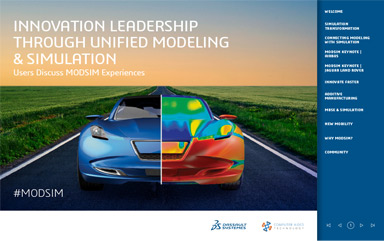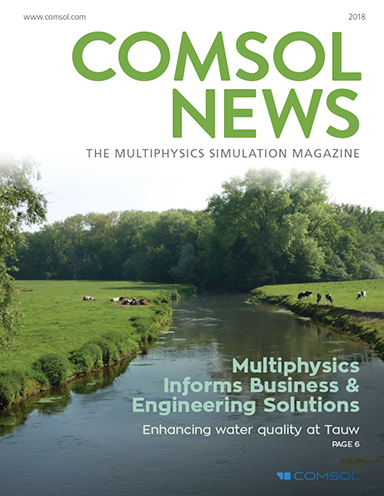Latest News
July 3, 2018
ESSS has released a new version of Rocky DEM particle simulation software that expands particle modeling capabilities and increases support for coupled ANSYS simulations. This new version provides features to model not only rigid but flexible particles, along with their interactions on structures and complex fluid flows. In addition, the release expands Rocky DEM multi-body motion capabilities, which can be employed in various applications. For some applications, users no longer need to couple the software with an external third-party motion-body dynamics tool, gaining easier integrated setup.
Particle and Breakage Models
Rocky 4.1 software features new particle models that help users to set up and simulate new particle behavior under realistic conditions.
Fiber particles. This model enables users to set up and simulate the dynamics of a large number of fibers, depicting behaviors such as flexibility, deformation and inter-fiber interaction as well as the effect of fluids on fibers through coupled simulation with ANSYS Fluent.
Shell particles. Rocky 4.1 gives the ability to simulate rigid and flexible shell particles. Shell elements can be a huge timesaver, since they enable modeling thin features with relatively fewer elements than solid-element modeling requires. New models allow for mixed particle models — combining fibers, shells and solids — extending the range of existing modeling possibilities.
Tavares breakage model. Based on Luis Marcelo Tavares' work (Federal University of Rio de Janeiro, Brazil), this model extends Rocky DEM’s previous breakage model by considering additional particle properties.
Multi-Body Motion Capabilities
Rocky DEM 4.1 gives more freedom in configuring complex geometry movements, enabling users to set up as many free-body motions as needed within a motion simulation. For example, users from heavy equipment and automotive organizations won’t need to use an external dedicated multi-body dynamics tool to perform such analysis, thus avoiding additional license costs and gaining easier integrated setup with this feature.
Extended ANSYS Coupling Functionality
Transient loads. Rocky DEM 4.1 supports transient loads on coupled simulations with ANSYS Mechanical. Users can transfer loads from particles to structures in multiple time intervals to analyze the complete stress operation envelope of a dynamic process. The operation is performed through the ANSYS Workbench environment, maintaining previous pervasive characteristics due to Rocky DEM’s tight integration with the Workbench framework.
Increased ANSYS Fluent support. Multiple domains and distributed simulations are now supported for one- and two-way coupled ANSYS Fluent problems. Users can simulate multiple fluid domains — both moving and stationary — with automatic handling of the general domain interfaces. In addition, the distributed simulation capability enables multiple simulation nodes within ANSYS Fluent to be defined directly inside the Rocky DEM interface by importing a node configuration file.
Performance Improvements
V4.1 takes a leap forward in all models, increasing scalability within multiple GPU systems for spheres and general polyhedral models. This performance improvement can reach up to a 10 times performance gain while using 10 times less memory.
The latest software also offers support for running on headless cluster nodes. This capability configures Rocky DEM software as cloud-ready for Google Cloud and Amazon Web Services systems.
For more info, visit ESSS.
Watch DE's CAASE18 interview with ESSS/Rocky DEM below.
Sources: Press materials received from the company.
Subscribe to our FREE magazine, FREE email newsletters or both!
Latest News
About the Author
DE’s editors contribute news and new product announcements to Digital Engineering.
Press releases may be sent to them via [email protected].
Related Topics






